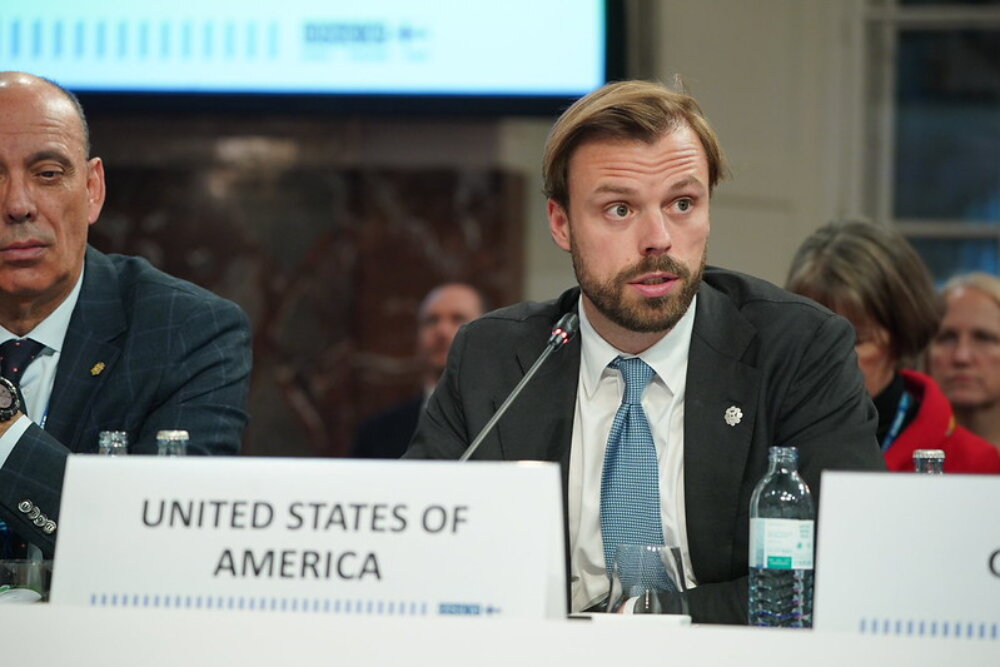OSCE/Frane Maroevic

Defending Media Freedom in a Changing World
This article is part of the Special Issue on “The OSCE at 50: Reflections on security, cooperation and human rights”, published on a rolling basis between July and November 2025. The Special Issue was curated and edited by Walter Kemp and Christian Strohal, Security and Human Rights Monitor Editorial Board members and guest editors-in chief.
Dunja Mijatovic is a Member of Advisory Committee Knowledge Platform on Security and Rule of Law, Member of Executive Board Belgrade Centre for Security Policy, Independant Consultant and Researcher.
Abstract
Fifty years ago, the Helsinki Final Act set out a new vision for Europe – one where peace depended on openness. The Helsinki Final Act did more than address geopolitical tensions, —it pledged support for fundamental freedoms, including open information exchange and cultural interaction. For the first time, countries from both the Western and Eastern blocs committed to enabling the free flow of information and removing barriers to journalism. This was a landmark acknowledgment that free media is essential to peace, security and democracy. Among its landmark commitments, the 1975 Helsinki Accords explicitly enshrined the “essential and influential role of the press and media” and pledged to facilitate “the freer and wider dissemination of information of all kinds”. At its core, the 1975 Helsinki Final Act was about more than ending military threats: it committed states to respect human rights and fundamental freedoms. In the “Third Basket” on cooperation in economics, science and environment, the Final Act placed special emphasis on information exchange and cultural contacts. Crucially, it noted that “the essential and influential role of the press, radio, television, cinema and news agencies… is to be emphasized”, and that states should “facilitate the freer and wider dissemination of information of all kinds”. In other words, governments agreed to remove barriers so that journalists could work across borders and citizens could access a diversity of news.
This promise was revolutionary during the Cold War: East and West agreed that independent media and access to information were not just ideals but security goals. Today, on the Golden Jubilee of the OSCE, we look back at that original media-freedom bargain and ask: have 50 years of OSCE history honoured the Helsinki promise – or has it been left behind?
The commitments made in Helsinki were visionary, anticipating a Europe where open discourse would serve as the bedrock of democracy, and where independent journalism would act as a bulwark against authoritarianism. Yet in 2025, these ideals face profound and expanding challenges, and the answer is mixed. On one hand, the OSCE has built a unique international watchdog – the Representative on Freedom of the Media (RFoM) – and achieved concrete advances, such as safer conditions for some journalists and reforms of abusive laws. These commitments were a breakthrough. For the first time, in the Helsinki Final Act 35 countries from Europe, North America and the Soviet bloc jointly declared that media freedom was a cornerstone of security. They pledged to “improve the conditions under which journalists from one participating State exercise their profession in another”. In practical terms this meant allowing foreign newspapers and radio broadcasts and easing restrictions on travel by journalists. On the other hand, the media environment now faces new challenges such as rampant disinformation, digital-age censorship and AI-powered controls that were unimaginable in 1975. Above all, the gap between rhetoric and reality remains wide. In too many OSCE states, political leaders pay lip-service to media freedom in public, even as they throttle independent outlets at home. As the OSCE’s 50th anniversary unfolds, the crucial question is not just what commitments were made in 1975, but whether participating States today have the political will to fulfil them in practice – ensuring that media freedom is more than a Cold War-era promise.
DOI: 1058866/DIRP6871



Comments
* Your email address will not be published